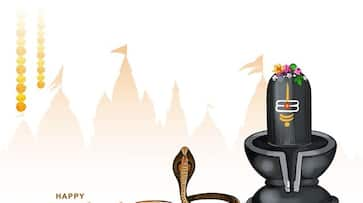On the occasion of Nag Panchami (August 9, Friday), here are some of the intriguing and lesser-known mythological stories about snakes.
In Hinduism, snakes are revered as deities, and various texts contain interesting and mysterious stories about them. However, many of these fascinating details are not widely known. On the occasion of Nag Panchami (August 9, Friday), here are some of the intriguing and lesser-known mythological stories about snakes.
Significance of snakes
Religious texts state that sage Kashyap had 13 wives; one of them served him faithfully, and in gratitude, Kashyap offered to grant her a wish. She requested to have a thousand powerful snakes as her sons. Sage Kashyap fulfilled her wish, leading to the origin of the snake lineage from Kashyap and Kadru.
Nagaraja
In the Mahabharata, Vasuki is known as Nagaraja, the king of serpents. Vasuki is depicted as an ornament around the neck of Lord Shiva. Many temples dedicated to Nagraj Vasuki exist across India. Worshiping Nagraj Vasuki is believed to provide protection from the fear of snakes and bring happiness and prosperity. In other texts, serpent Takshaka is also described as the king of the Nagas.
Who is the most powerful snake?
According to the scriptures, Sheshnag, the eldest of the serpents, is considered the most powerful. Initially destined to be the king of snakes, Sheshnag chose the path of penance and, after pleasing Lord Vishnu, became his divine bed. Sheshnag has a thousand hoods and supports the earth on them.
King Parikshit
According to the Mahabharata, King Parikshit, the son of Abhimanyu, was bitten by the serpent Takshak. In response, his son Janamejaya observed a Nagdah Yagya, a sacrificial ritual in which many dangerous, poisonous snakes were burned to ashes.
Last Updated Aug 6, 2024, 12:42 PM IST









![Salman Khan sets stage on fire for Anant Ambani, Radhika Merchant pre-wedding festivities [WATCH] ATG](https://static-gi.asianetnews.com/images/01hr1hh8y86gvb4kbqgnyhc0w0/whatsapp-image-2024-03-03-at-12-24-37-pm_100x60xt.jpg)
![Pregnant Deepika Padukone dances with Ranveer Singh at Anant Ambani, Radhika Merchant pre-wedding bash [WATCH] ATG](https://static-gi.asianetnews.com/images/01hr1ffyd3nzqzgm6ba0k87vr8/whatsapp-image-2024-03-03-at-11-45-35-am_100x60xt.jpg)


